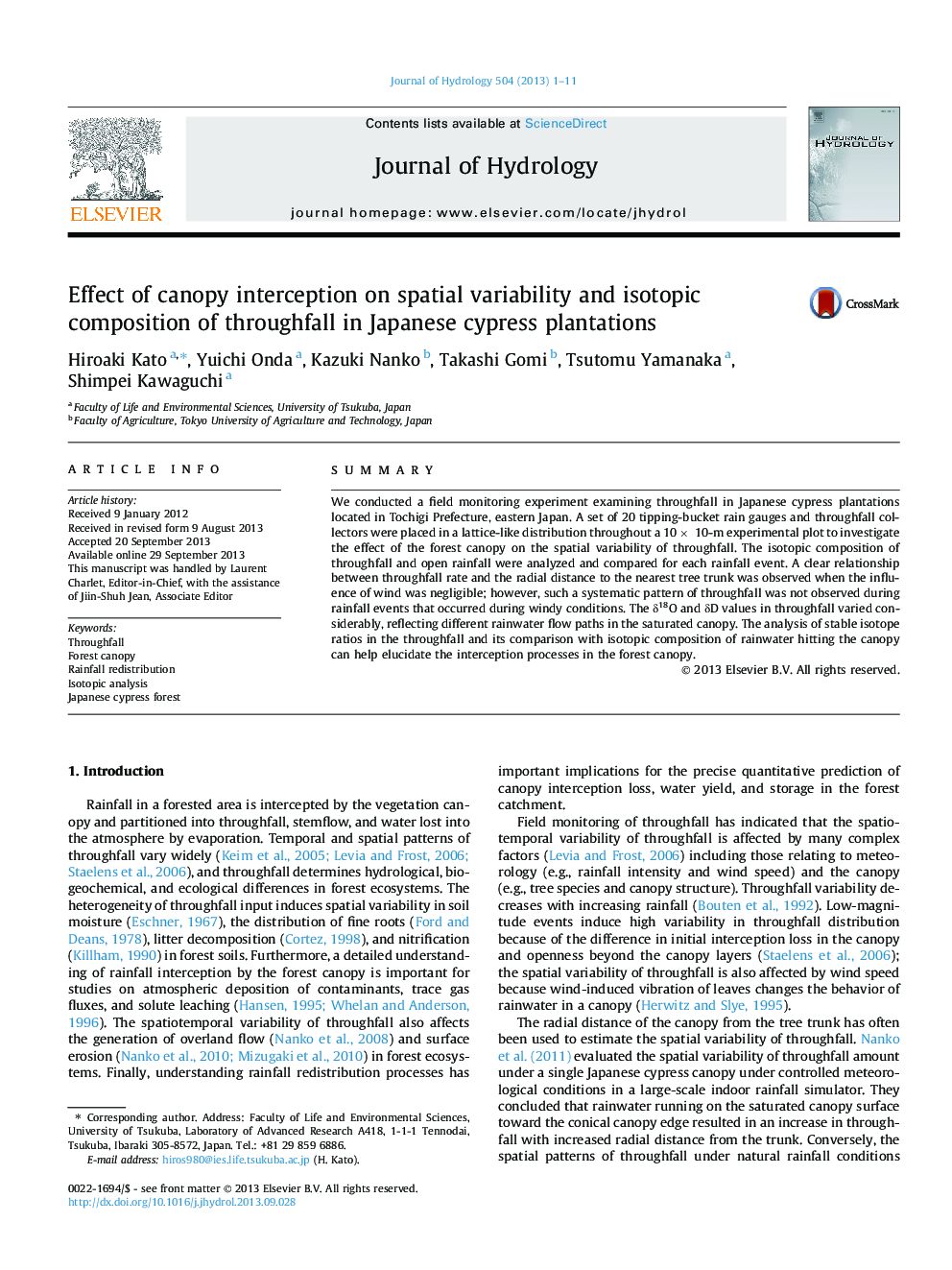| Article ID | Journal | Published Year | Pages | File Type |
|---|---|---|---|---|
| 4576070 | Journal of Hydrology | 2013 | 11 Pages |
•We presented a field experiment examining throughfall in Japanese cypress plantation.•We combined a conventional field monitoring of throughfall and isotopic technique.•The data suggested that wind condition can influence the throughfall patterns.•The isotopic technique can serve as a tool for understanding interception processes.
SummaryWe conducted a field monitoring experiment examining throughfall in Japanese cypress plantations located in Tochigi Prefecture, eastern Japan. A set of 20 tipping-bucket rain gauges and throughfall collectors were placed in a lattice-like distribution throughout a 10 × 10-m experimental plot to investigate the effect of the forest canopy on the spatial variability of throughfall. The isotopic composition of throughfall and open rainfall were analyzed and compared for each rainfall event. A clear relationship between throughfall rate and the radial distance to the nearest tree trunk was observed when the influence of wind was negligible; however, such a systematic pattern of throughfall was not observed during rainfall events that occurred during windy conditions. The δ18O and δD values in throughfall varied considerably, reflecting different rainwater flow paths in the saturated canopy. The analysis of stable isotope ratios in the throughfall and its comparison with isotopic composition of rainwater hitting the canopy can help elucidate the interception processes in the forest canopy.
